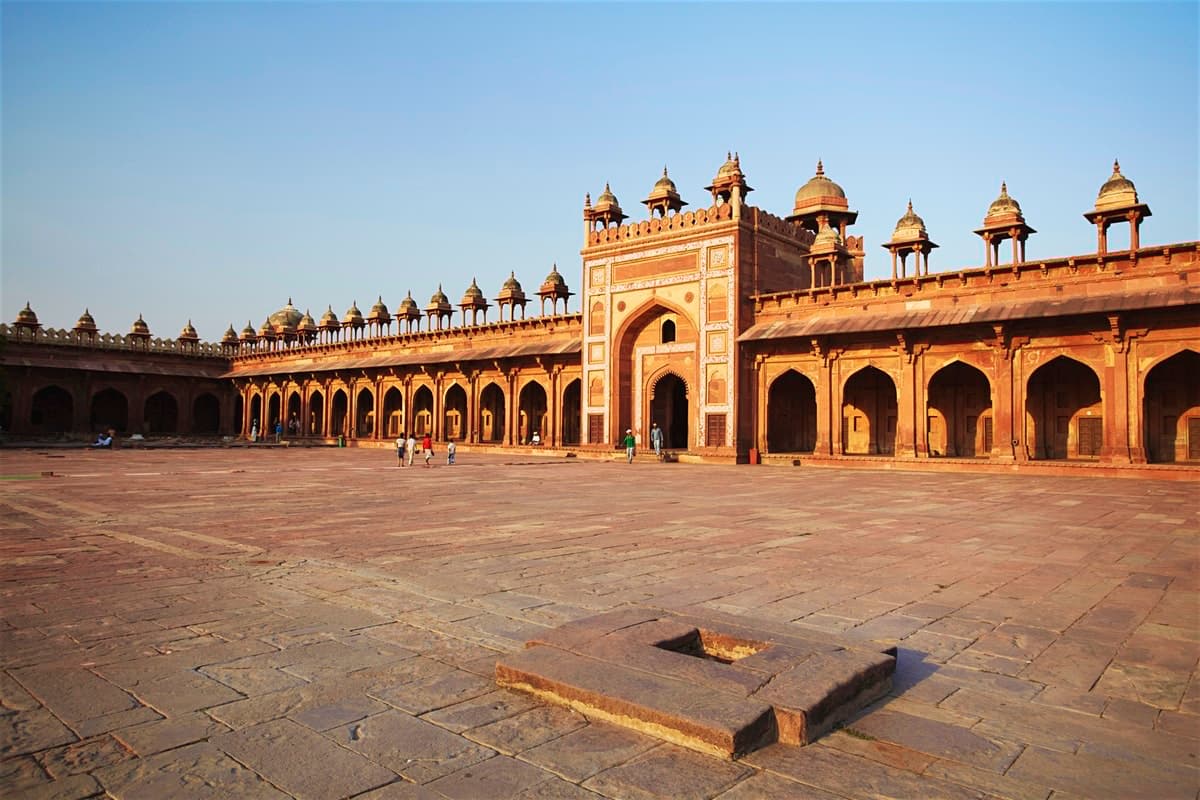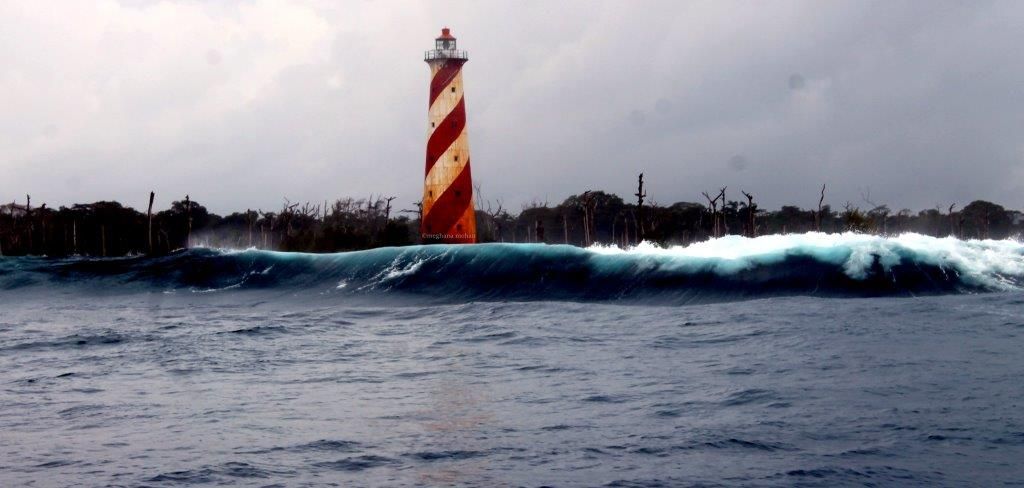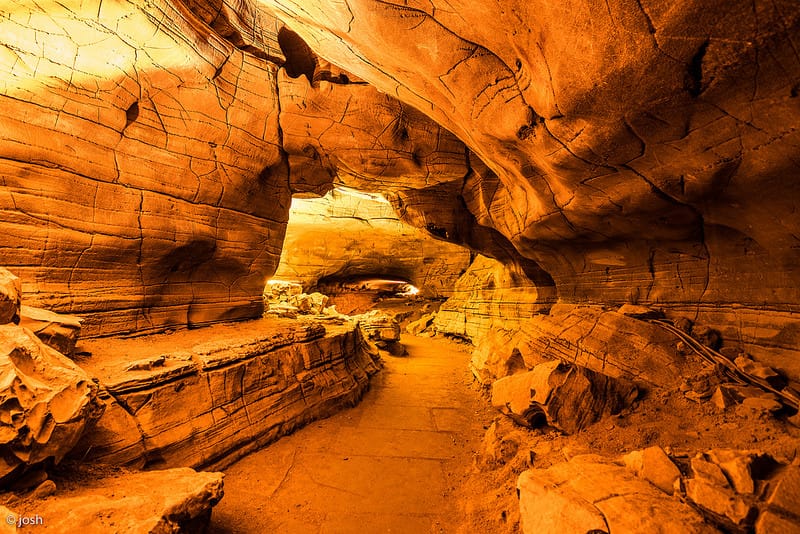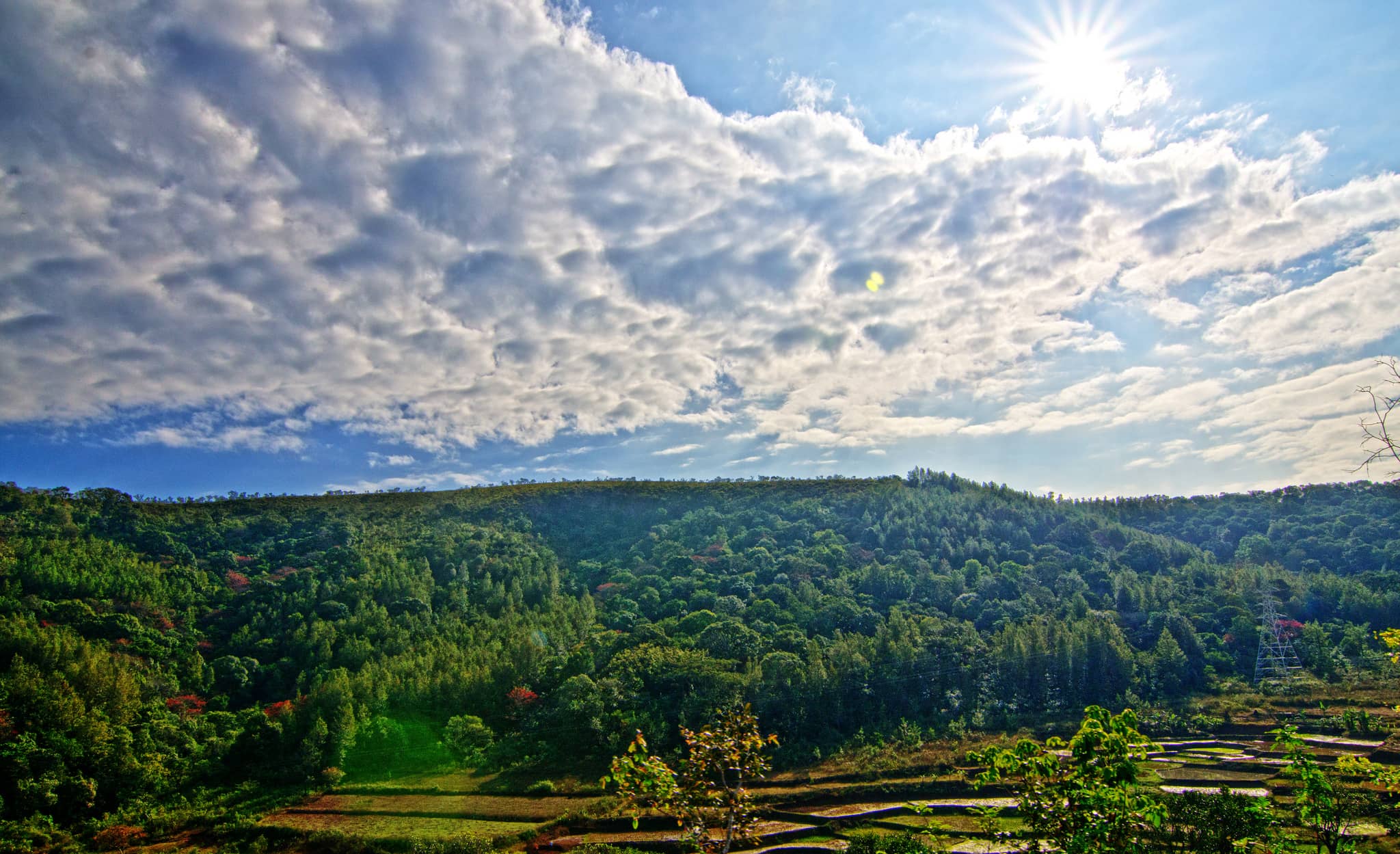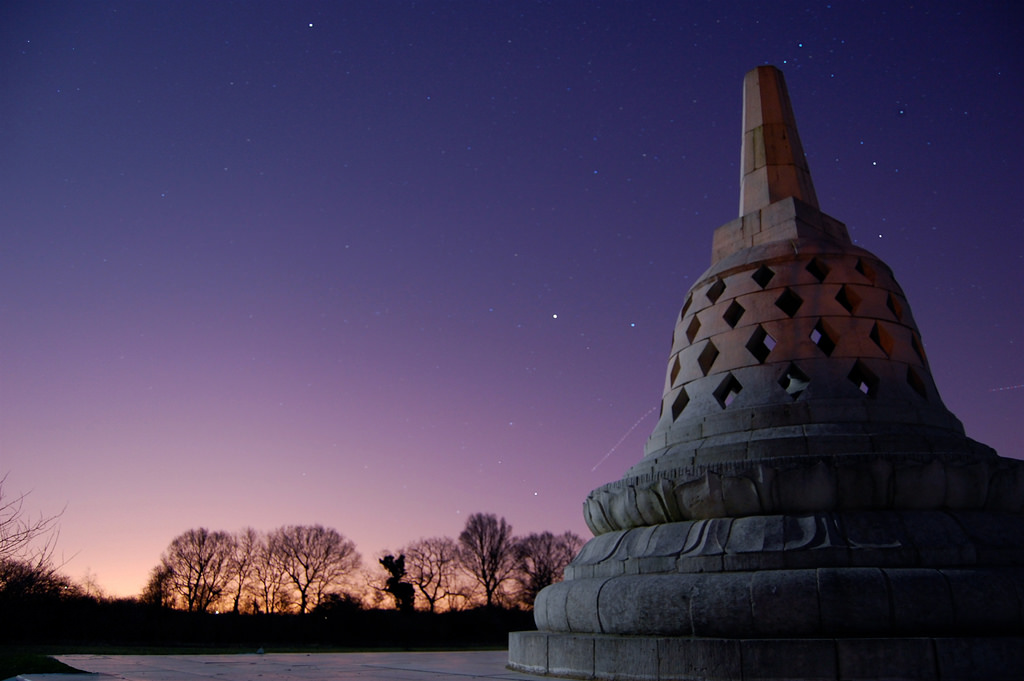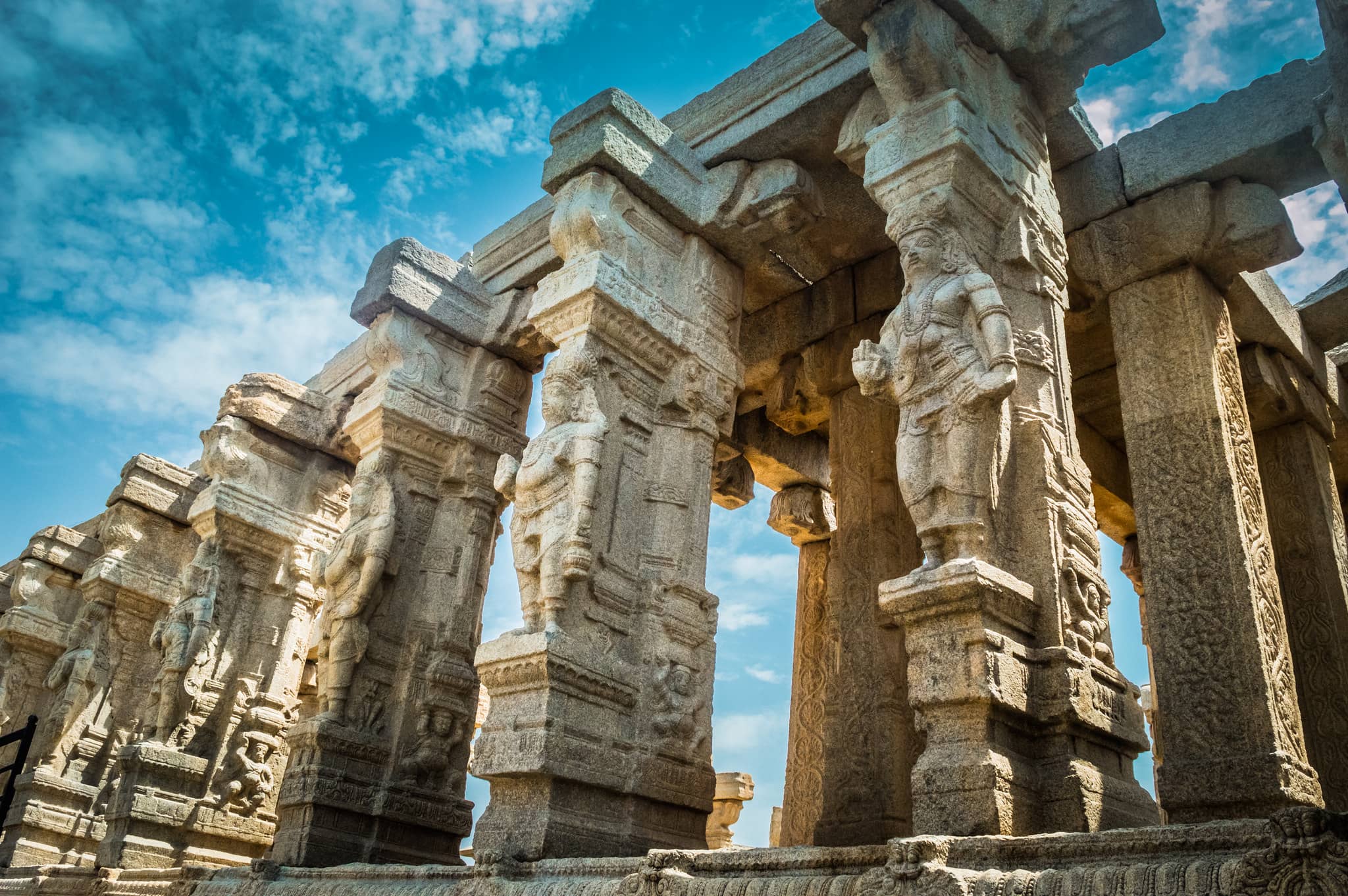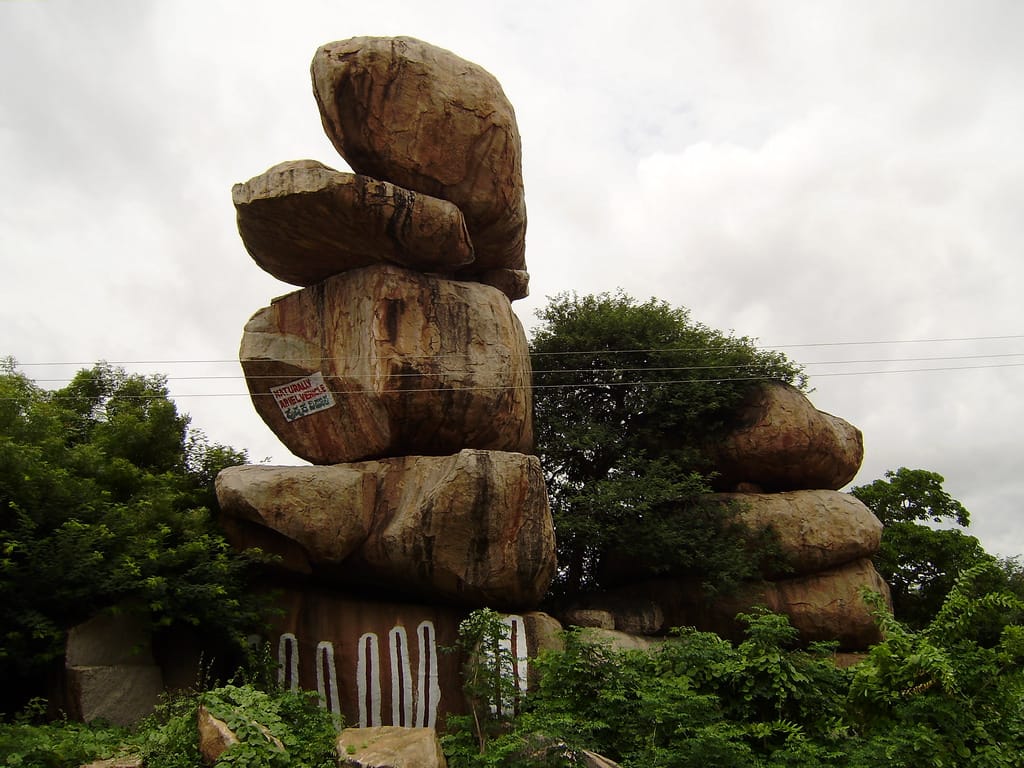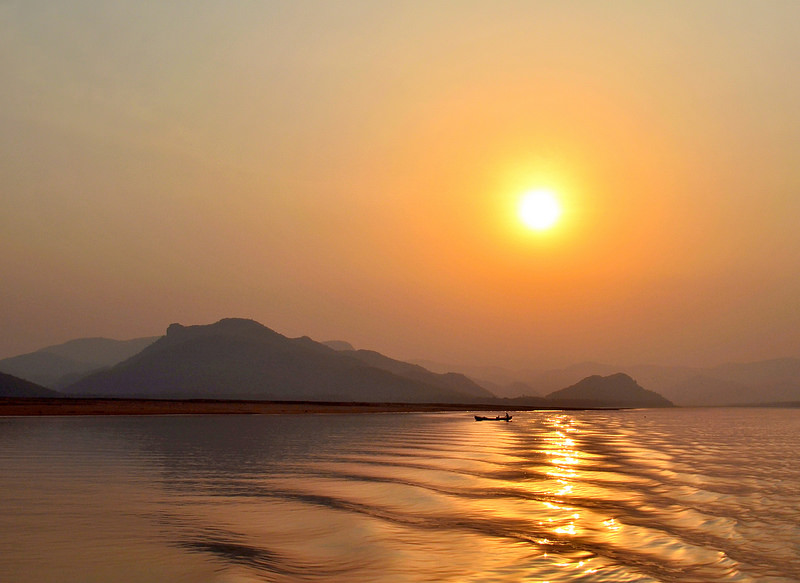Fatehpur Sikri is a small city in northern India, located just west of Agra. It was built by a Mughal emperor in the 16th century. The city is known for its red sandstone buildings. The Buland Darwaza gate is the entrance to the Jama Masjid mosque. Nearby, you’ll find the marble Tomb of Salim Chishti. The Diwan-E-Khas hall is famous for its carved central pillar. Jodha Bai’s Palace, which blends Hindu and Mughal styles, is next to the five-story Panch Mahal that offers a great view of the area.
places to visit in Fatehpur Sikri
Buland Darwaza

Buland Darwaza, also known as the “Gate of Magnificence,” was constructed in 1601 by Mughal Emperor Akbar to mark his victory over Gujarat. It stands as the main entrance to the palace complex in Fatehpur Sikri, located about 43 km from Agra. The gate is a remarkable example of Mughal architecture, towering at 54 meters in height. Its grandeur symbolizes the might of Akbar’s empire. The structure is made from red sandstone with intricate carvings and inscriptions. It remains one of the most iconic landmarks in Fatehpur Sikri and India’s architectural history.
Tomb of Sheikh Salim Chishti

The Tomb of Sheikh Salim Chishti is one of the finest examples of Mughal architecture in India, built between 1580 and 1581. Located in Fatehpur Sikri, it honors the Sufi saint Sheikh Salim Chishti, who was highly revered by Emperor Akbar. The tomb is made of white marble, featuring delicate carvings and inlaid stones. The design reflects the fusion of Islamic and Persian architectural styles, with a central dome and arches. Pilgrims visit the site to pay respects and seek blessings. The tomb’s peaceful surroundings add to its spiritual significance.
Jama Masjid
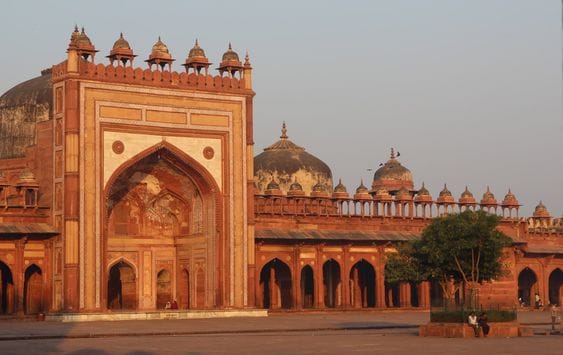
Jama Masjid, located in Fatehpur Sikri, is one of the largest mosques in India, built in the 16th century by Emperor Akbar. This massive mosque spans about 540 feet in length and features exquisite Mughal architecture. The mosque is constructed using red sandstone and marble, with intricate carvings and calligraphy. The grand central courtyard can hold thousands of worshippers. Jama Masjid is a significant religious site, reflecting Akbar’s tolerance and respect for all religions. It is part of the UNESCO World Heritage Site of Fatehpur Sikri.
Jodha Bai’s Palace
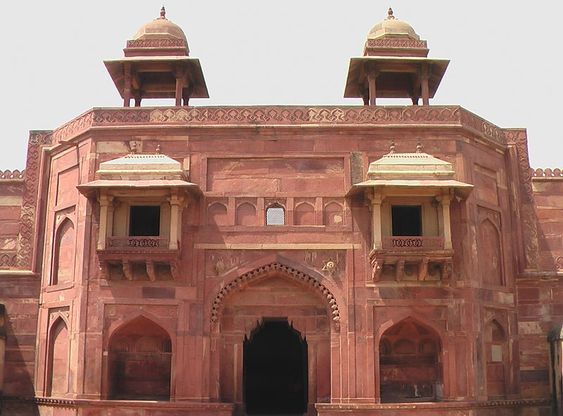
Jodha Bai’s Palace is an important structure in Fatehpur Sikri, built by Emperor Akbar in the 16th century. The palace is constructed from red sandstone and features a blend of Hindu and Mughal architectural styles. It has a central courtyard surrounded by rooms and halls, decorated with detailed carvings. The palace was likely the residence of Jodha Bai, Akbar’s Rajput wife. The design of the palace symbolizes the harmony between Hindu and Muslim cultures. Today, it is a popular tourist attraction, known for its historical and architectural significance.
Panch Mahal
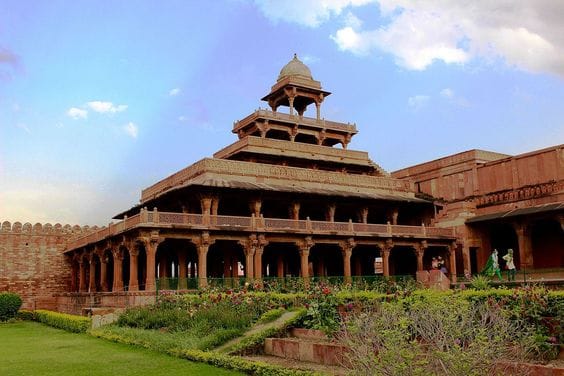
Panch Mahal, also known as the “wind catcher tower,” is a five-story palace located in Fatehpur Sikri, commissioned by Emperor Akbar. The palace was designed to allow cool air to flow through the structure, serving as a retreat during the hot summers. Each of the five levels has open arches, offering stunning views of the surrounding area. The design is a combination of Persian, Mughal, and Rajput influences. The palace is an example of the innovative architectural solutions created by the Mughals. It remains a highlight of Fatehpur Sikri’s historical and architectural heritage.
Diwan-E-Khas

Diwan-E-Khas, or the “Hall of Private Audience,” was built for Emperor Akbar in Fatehpur Sikri. This hall is famous for its unique central pillar, which is intricately carved and stands out as a central architectural feature. The hall was used by Akbar to hold meetings with his ministers and important officials. It is designed with a series of pillars and an open, spacious layout. The structure reflects the grandeur and sophistication of Mughal architecture. Today, Diwan-E-Khas is one of the main attractions for visitors to Fatehpur Sikri.
Best time to visit Fatehpur Sikri
The best time to visit Fatehpur Sikri is between September and April. During this period, the weather is pleasant for sightseeing. Summer months are very hot, with temperatures ranging from 30°C to 42°C, making it uncomfortable to explore. The monsoon season brings moderate rainfall, especially in July, with temperatures ranging from 25°C to 38°C. This season is good for visiting popular attractions like Diwan-i-Aam, Diwan-i-Khas, and Buland Darwaza. In winter, the days are mild, while the nights can be quite cold, with temperatures between 8°C and 25°C, making it a great time to explore the fort and other sites comfortably.
